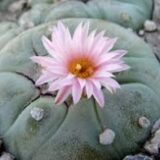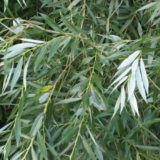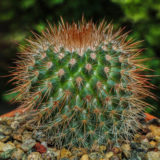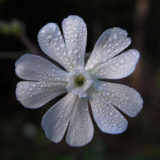Plants Used For Giving Good Dreams

Natural Plants That Give You Pleasant Dreams
A quick walk-through of any pharmacy or supplement aisle will reveal a number of sleep aids and relaxing herbal teas. But where do these products get their power? What natural plants provide relaxing sleep without synthetic ingredients? Are there any organic plants which induce pleasant dreams? Ancient civilizations, modern-day Indian tribes, as well as a number of psychoactive enthusiasts, have documented plenty of herbs and plants which can help induce sleep and bring pleasant dreams. It is possible to have outstanding sleep without any synthetic supplements. In fact, there are many herbs and plants which have been used throughout history and in present time, which are powerful sleep inducers and almost guarantee pleasant, vivid dreams.
List of Natural Plants That Help You Sleep and Dream
Some of these options may also be hallucinogenic in large doses (or give visions). Some may be regulated in certain countries. Still, these are some of the most powerful natural plants for inducing sleep and pleasant dreams used around the world. They are not listed in any particular order.
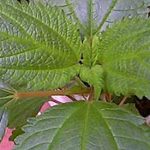 Aztec Dream Grass
Aztec Dream Grass
The Aztec Dream Grass is also called “Thle-Pelakano” and “Zacatechichi” by various tribes. It is most common among the Chontal Indians of Oaxaca, but grows abundantly all throughout Mexico, Costa Rica, and surrounding areas. The plant has been smoked to induce a peaceful and relaxing drowsiness that can lead to a deep slumber. The sleep is so good, one can supposedly feel their own heartbeat and pulse.
Ereriba
This plant is most popular in New Guinea. It is a tribal and traditional medicine well-known to induce colorful, vivid, and hallucinogenic dreams. Although it is used to induce a deep slumber, filled with visions, it first offers an inebriating effect. Ereriba is also known by its scientific name, Homalomena.
Damiana
Damiana is an extremely versatile herb, being added to making smoking blends and herbal tea blends alike. It is a powerful relaxant and also a nervine (which means is reduces stress and calms down the nervous system). It is very frequently used to induce peaceful sleep with pleasant dreams. Damiana goes by many others names as well, including its scientific name, Turnera diffusa.
Valerian
Valerian root extract is one of the most popular sleep-aids and stress reducers used throughout the world today. It is considered relatively safe. The sesquiterpene ketone “valeranon” creates powerful, sedative-like effects that are well-known to promote rest and relaxation. Valerian is very commonly used to induce sleep and is associated with pleasant dreams. This plant is a nervine and helps reduce the stress load on the nervous system and promotes overall relaxation. Valerian is also known by its scientific name, Valeriana officinalis.
Gi’i’Wa
Gi’i’Wa is native to Mexico and well-known among the many Oaxaca Indian tribes. It is especially used by the Mixtec and the Tarahumara for its strong sleep-inducing properties. The fungi is consumed, but if too much is used, sleep is accompanied by hallucinations. For this reason, it is also commonly used as a hallucinogen. Gi’i’Wa is also known by its scientific name, Lycoperdon marginatum.
 Lavender
Lavender
Lavender is sometimes used as an incense. Other times it is added to a smoking blend. Most commonly, it is used in herbal tea. Lavender is frequently employed for its relaxing, sleep-inducing properties. Lavender is a nervine, which means it helps reduce the stress of the nervous system. Lavender is also known as its scientific name, Lavandula officinalis.
Taique
Taique has been used by Indians of Chile and Colombia for centuries. It is especially popular among the medicine men of the Kamsa tribe and is used to induce a deep slumber filled with dreams. Taique is also known by its scientific name, Desfontainia spinosa.
Scopolia
Scopolia has been used as a sleep aid throughout history many times. In modern times, however, it is more typically employed as a sedative for children, or treatment for a variety of ailments (of which do not have anything to do with sleep). Still, it gained the nick name “sleeping strychnos” and can induce drowsiness. Scopolia is also known by its scientific name, Scopolia carniolica.
Wichuriki (or Hikuri)
Wichuriki goes by many names but is popular among the Tarahumara Indians of Mexico. It is a powerful, hallucinogenic cactus that is used to create deep sleep that allows one to have extremely realistic dreams of travel and exploration.
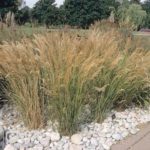 Sleepy Grass
Sleepy Grass
This plant is native to Guatemala, Southern United States, and Mexico. While it can be used as a narcotic, and even a hallucinogen (having LSD like effects in high doses), it is also used as a sleep aid in some tribes. Sleepy Grass is also known by its scientific name, Stipa, and has many species.
Esakuna
This plant is most commonly found used by medicine men in Tanzania. It is regularly employed as a sleep inducer, specifically for the prophetic dreams it creates. And is usually smoked along with tobacco. Esakuna is also known by its scientific name, Cymbopogon densiflorus.
Sinicuichi
There are three species of Sinicuichi, but H. salicifolia is the most used for its psychoactive effects. It is very commonly employed in form of an intoxicating drink which produces a strong, pleasant drowsiness. In higher doses, hallucinations (especially auditory) may occur. Sinicuichi is also known by its scientific name, Heimia salicifolia.
Chamomile
Chamomile is one of the most frequently employed herbal teas around the world for relaxation and calming effects. It is able to induce deep, peaceful sleep and promotes vivid, pleasant dreams. It has been employed for thousands of years, even being known by the Ancient Greeks, by the “temple sleepers,” whom would come to the temple for therapeutic help with sleeping disorders. Chamomile is a nervine, which helps relax the nervous system and reduce stress. Chamomile is also known by its scientific names Matricaria recutita and Chamomilla recutita.
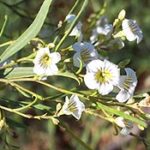 Pituri
Pituri
The Pituri Bush is one of the oldest used plants for both medicinal and recreational purposes. Although it has the most history among the Australians, it is well-known around the world in modern times to stimulate strong vision-like dreams (often pleasurable in nature). Pituri is also known by its scientific name, Duboisia hopwoodii.
Teonanacatl (Magic Mushrooms)
Magic mushrooms come in many shapes and sizes but some of the most powerful in terms of dreamlike visions, and hallucination-filled dreams, include Psilocybe cubensis, Conocybe siligineoides, Panaeolus sphinctrinus, Psilocybe acutissima and many more.
Final Notes on Natural Plants for Sleeping and Dreaming
Although there may be many supplements and solutions offered to treat sleeping disorders, induce sleep, and give pleasant dreams, only some of them are natural. For example, many people believe that melatonin is a natural supplement sold to help promote peaceful sleep and make one tired. Melatonin does naturally occur in the human body (as well as in animals) within the pineal gland, however, the type of melatonin that is sold in a dietary supplement bottle at the local pharmacy is synthetic. Some of the above listed natural plants for inducing sleep have been used for a very long time and have been proven to be just as effective, if not more effective.
